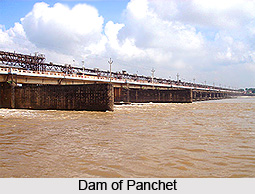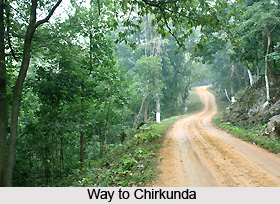 Chirkunda is a sub-urban city and a notified area in Dhanbad district in the state of Jharkhand. Chirkunda is situated amidst rich coal mines of Jharia and Raniganj District .
Chirkunda is a sub-urban city and a notified area in Dhanbad district in the state of Jharkhand. Chirkunda is situated amidst rich coal mines of Jharia and Raniganj District .
Demography of Chirkunda
According to the Population Census in the year 2001, Chirkunda had a population of 39,121. The males comprise 53 percent of the population and females 47 percent. Chirkunda has an average literacy rate of 64 percent, higher than the national average of 59.5 percent; with male literacy of 71 percent and female literacy of 56 percent.
About 14 percent of the population is under 6 years of age. The official language and most widely spoken language are Marwari language and Khortha language. This is a linguistic blend of Bengali language and Magahi language. Other languages which are used here are Bengali language and Hindi language. Hinduism is the prominent religion here, followed by Islam.
Economy of Chirkunda
Major industries of Chirkunda in and around this area include refractory making, coal making, iron and steel plants, food processing, retailing, and service industry. For it`s location, Chirkunda has many big business houses of the Dhanbad district such as the Chulanias, the Gaddhyans, the Kharkias, the Choudhary`s, the Niganias`, to name a few. The presence of Damodar Valley Corporation`s Maithon Dam and Panchet Dam are another major factor for the development of industries in and around this area. The coming up of Maithon Thermal Power station holds brighter prospects for the future and prevalent industries. Many educated professionals are also living in Chirkunda. Nearby areas include Kumardhubi, Mugma, Nirsa, Barakar, Kulti and Panchet.
Education of Chirkunda
 Some of the educational institutions of Chirkunda are Nandalal High Institution, Kapapsara Junior School, J.K.R.R High school, High School in Kumardhubi, B.S.K College, Sahu College of Commerce, S. C. Prashad R.Prashad Women`s College and SHMS College.
Some of the educational institutions of Chirkunda are Nandalal High Institution, Kapapsara Junior School, J.K.R.R High school, High School in Kumardhubi, B.S.K College, Sahu College of Commerce, S. C. Prashad R.Prashad Women`s College and SHMS College.
Tourist Places in Chirkunda
Some of the prominent tourist spots of Chirkunda are the Maithon Dam, Kalyaneswari Temple and Panchet Dam. The literal meaning of Maithon is Mother`s Abode; it is the biggest reservoir of the Damodar Valley Corporation (DVC). This dam, designed for flood control, has been built on the Barakar River. It has a unique underground power station which is first of its kind in South East Asia. Just a little away from the dam lies an ancient temple at Kalyaneshwari. This is known as Kalyaneshwari Temple.
The lake at Maithon is spread over an area of 65 square km. There is a rest house on an island in the lake. The boating and fishing facilities are available. Close by Maithon there is a Deer Park and a bird sanctuary are also situated
Kalyaneswari Temple
Kalyaneswari Temple is very close to Maithan Dam. It is 46 km away from Dhanbad District. This place is famous for the presiding deity called Maa Kalyaneshwari. It draws a large number of devotees throughout the year. So famous is the temple that even the name Maithan is said to have been derived from Mai-Ka-Than meaning Abode of the Goddess. There is also a deer park and a bird sanctuary in the vicinity.
Panchet Dam
This is also a census town situated 9 kilometers south of Chirkunda and about 54 km southeast of Dhanbad District. The Panchet Dam, around which the Township has developed, is located here.



















